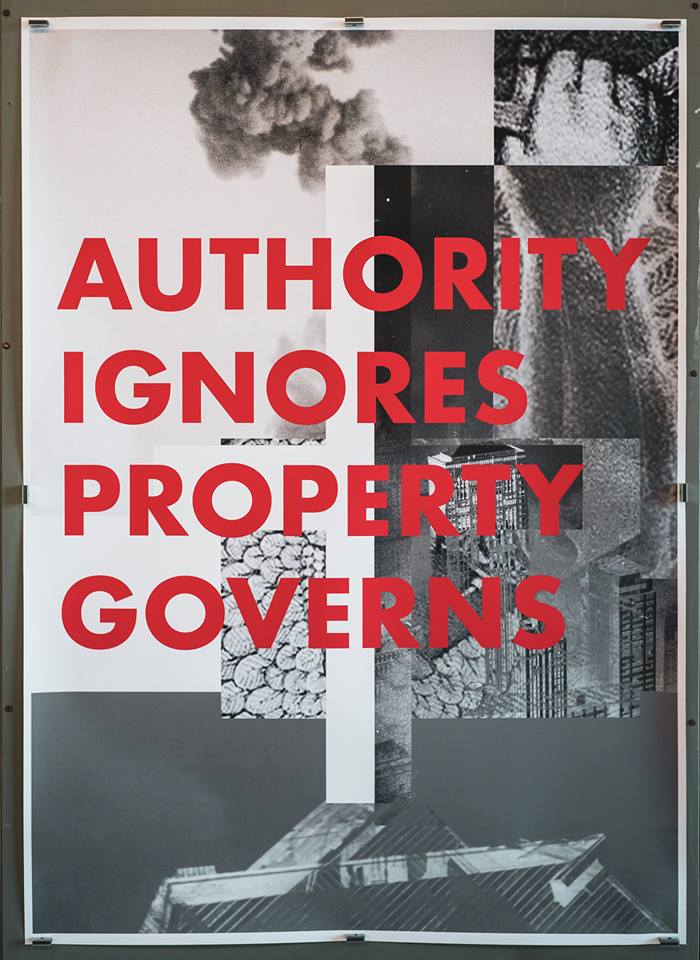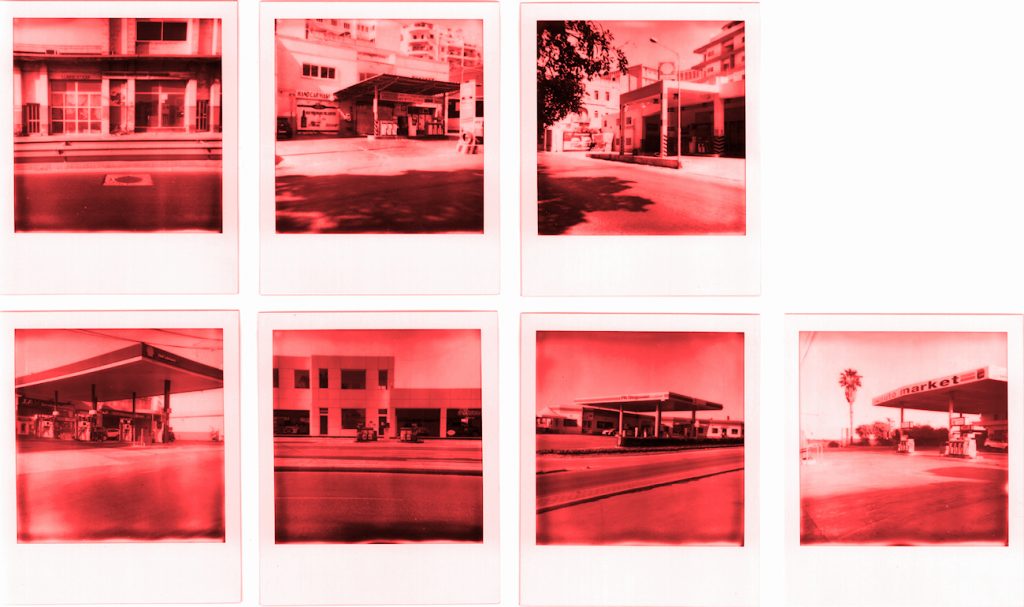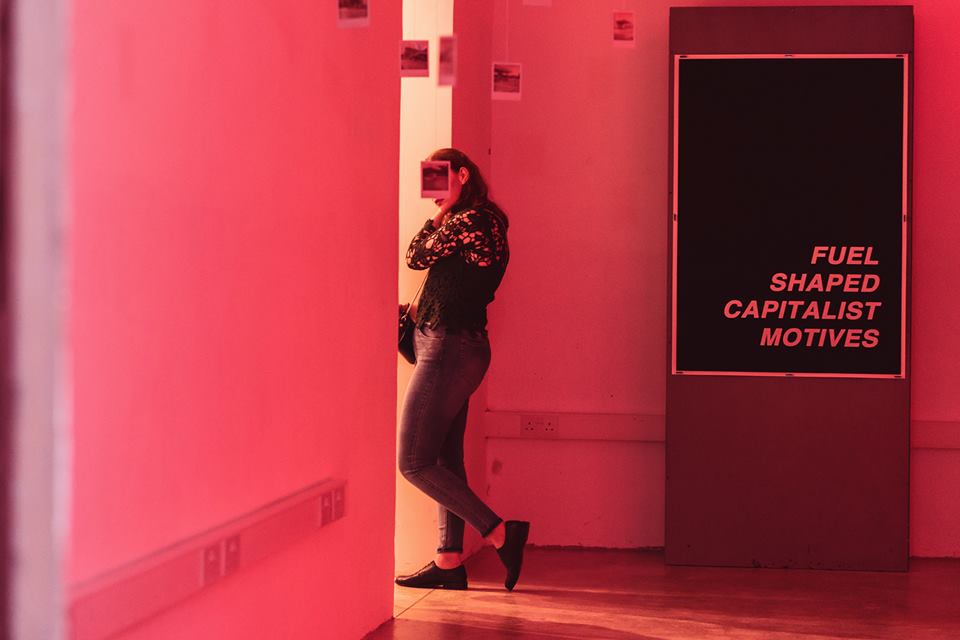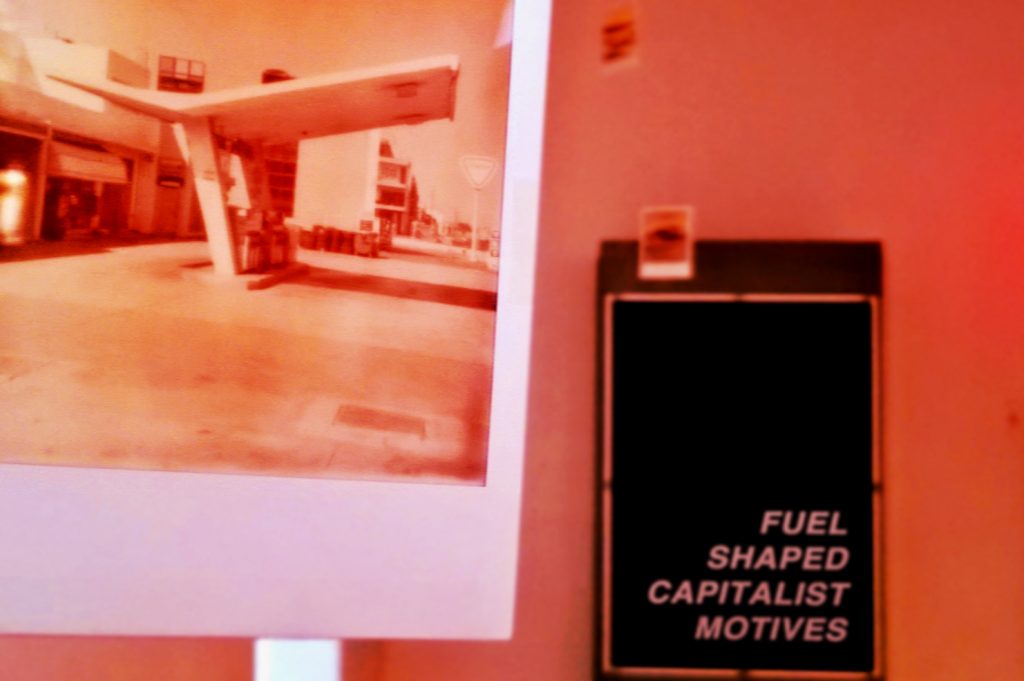‘Landings’ is an artistic response to the outpouring number of petrol station applications, other deals with property, shoddy business and the issues of land use. Though enchanting and gentle, the imagery calls for public attention to the alarming appropriation of ODZ land for development and profiteering.
by Raisa Galea and Kevin Mallan
Image: Polaroids by Kevin Mallan (colorised by Isles of the Left)
Isles of the Left spoke to Kevin Mallan about his exhibition ‘Landings’ which was on display between 17 and 24 August 2018 at the Friends of the Earth Malta‘s newly opened Green Resource Centre in Floriana.
Raisa Galea: The theme of your exhibition is the impact of capitalist economy on the environment. Why did you choose petrol stations as the example to illustrate such an impact here, in Malta?
Kevin Mallan: The impacts could be rather abstract and intangible at times. Currently, there is focus on matters of land and ‘Petrol Stations’ are just one aspect of the ongoing work. This sub-theme stems from concerns relating to the subject. As seen, petrol stations’ applications have been on the increase with proposals on Outside Development Zones, following a 2015 policy approval that allows relocation of these structures to such areas.
[beautifulquote align=”left” cite=””]Development approval of further petrol stations is quite ironic at a point in time when we are questioning transportation methods and looking towards zero-emission strategies.[/beautifulquote]
Although the infrastructural planning is far from ideal, the idea of having more petrol stations here is illogical. In a situation where you can find one at practically every inch of the island, does that make sense? Development approval of further petrol stations is quite ironic at a point in time when we are questioning transportation methods and looking towards zero-emission strategies. Although one might doubt a total phase-out anytime soon, it would be considerate to ask what is bound to happen in a couple of years’ time.
As is apparent, development of these petrol stations is providing an opportunity for large economic activity on what once was an Outside Development Zone (ODZ). Would these now provide an excuse for further development in the affected areas? Main concerns are therefore primarily related to land and further development. If the concerns fail to be heard, would that result in the extension of this conglomeration of buildings, not to mention other repercussions it could bring? You ought to ask, if so needed and if safe to do so, why don’t we upgrade existing petrol stations or utilise closed ones?
I think the answers to these questions are quite obvious to anyone who wishes to think thoroughly about the issue though, and they all seem to point to the same directions. Notwithstanding that, the exhibition does not seek to offer answers as such, but rather aims to raise awareness and push audience to think about the subject and such issues.
The working title of your MA Research Project is “Anthropocene—A Dystopian Legacy / Patria”. On the other hand, the Polaroid images of petrol stations are rather visually appealing. How does the exhibition’s imagery capture the links between the increasing number of petrol stations and the economic causes?
[beautifulquote align=”left” cite=””]It could very well be “easier to imagine the end of the world” rather than other working alternatives after all, but amidst this, I wish that not all hope is lost.[/beautifulquote]
‘Landings’, the actual exhibition, offers a glimpse at some of the subjects currently being explored in my research project, which are not limited to ‘Petrol Stations’. Dystopia within this context does not refer to sudden catastrophic events but rather tackles the idea of what the supremacy of the current economic system alongside the human impact could lead to. It is a “slow” mundane process but it has been going on for years, and its repercussions are more visible now, in the 21st century. It will keep going, affecting our environment and other aspects along the way, unless better practices emerge. As some say, it could very well be “easier to imagine the end of the world” rather than other working alternatives after all, but amidst this, I wish that not all hope is lost.
The imagery in this exhibition is practically a work in progress, and the sub-themes aren’t fully resolved in that sense. Also, the title includes aspects of work which are not on display. For instance, this includes subjects of consumption and waste management. Some work was excluded in favour of recent images, a decision made to concur with current coursework. The imagery you are referring to forms part of a series of photographs that were used to document existing stations.
[beautifulquote align=”left” cite=””]The display of this selection of work intends to show the actual amount of petrol stations one could find in a small stretch of land, which could perhaps be the initial step towards further questioning.[/beautifulquote]
The Polaroid was used as an alternative instantaneous medium. Although these were not made in a manner to look appealing, the images in the first room aren’t portraying the actual causes per se. Rather, these show a mundane structure mostly devoid of the social aspect, shot in straightforward manner, where the situation permitted. The display of this selection of work intends to show the actual amount of petrol stations one could find in a small stretch of land, which could perhaps be the initial step towards further questioning. Personally, it also serves as a means to support an ongoing analysis of a subject.
The series has reached over 70 unique shots and it’s not yet concluded. At the exhibition, the photographs were displayed in a manner that surround the viewer and a few steps away from that imagery are snapshots from local articles—an essential link that should guide the viewer towards the right context. A text-based work was included with the intention to invite the viewer to make further connections. The red lighting in the room was a warning symbol. In my opinion, all these signifiers are equally important and, even though photography is the main working medium, I don’t feel constrained to work within any of its confined borders.
Your photographic project is not abstract, it seeks to attract public attention to the environmental costs of free market capitalism, which currently reigns supreme in the majority of countries, including Malta. In your opinion, how does the Maltese artistic scene respond to these developments?
Where possible, my practice was subjected to an objective representation, but the project can also be viewed as a personal reflection. This time, due to the nature of the project, a wide audience is almost essential and naturally called for, and this somehow entails a viewing outside the confined spaces of gallery walls and commercial practices. Above all, the project seeks to question current practices, the outside relations, and how these can affect and alter our living, at times without us really noticing or caring much for something to be done about it, accepting that as the status quo.
[beautifulquote align=”left” cite=””]If we want art to serve one of its purposes, I believe we must then move on from conservative practicing stands and be critical of the systems we are in.[/beautifulquote]
If we want art to serve one of its purposes, I believe we must then move on from conservative practicing stands and be critical of the systems we are in. I haven’t really examined the situation, and although I have been following the art scene for quite some time, I wasn’t much involved in it from a practical standpoint. Also, I have to focus on improving my own art. Due to this fact, I cannot keep track of all that goes in the scene and I may not be the right person to criticise it. The scene seems to have garnered momentum though, but subjects and critical perspectives remain up for questioning with the objectification and commodifying of art still seemingly widespread.
I cannot be sure, but in part, we might be prisoners of our own circumstances, torn between what we stand for and the forced mechanisms of a powerful system, which can be both alienating and inevitable. I find that there are a few people who acknowledge the emergency of the situation, but that is not necessarily embedded within their artistic endeavours. Art can be engaging and it can educate, and I believe we must be critical of our situations and push towards a more democratic following, for which we are responsible. Regulative bodies as well as lack of proper education could also be acting as an invisible barrier constraining thought and action on these regards.



Kevin Mallan chooses visual art as means to investigate matters concerning consciousness, life and political conscience, often through methods that merge photographic practices with other media. He is currently at an experimental stage working on a research project for a Master’s Degree at Falmouth University. While the project examines society and the human impact on the environment in close proximity with the subjects of industrial development and global capitalism, the study predominantly aims to question socio-economic practices within the Maltese borderline.




Leave a Reply